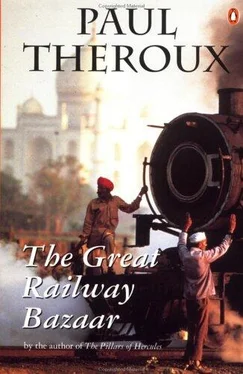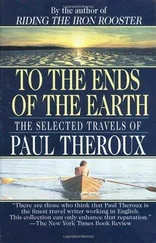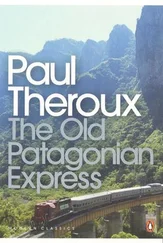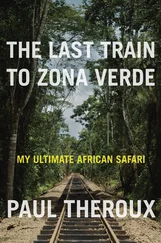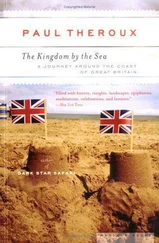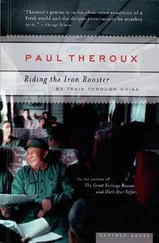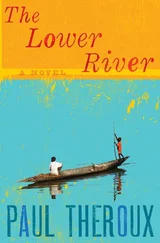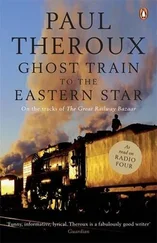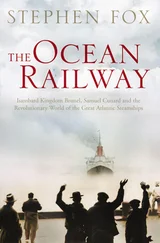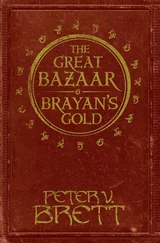'It all looks absolutely hideous,' said Molesworth. But he was smiling. 'I think I'm going to like it.' He was off to the high-priced fishing village of Tarabya. He gave me his telephone number and said I should ring if I got bored. We were still on the platform at Sirkeci. Moles-worth turned to the train. 'I must say I'm not sad to see the back of that train, are you?' But he said it in a tone of fussy endearment, in the way a person who calls himself a fool really means the opposite.
To catch a glimpse of oneself in a gilt-framed ten-foot mirror at the Pera Palas Hotel in Istanbul is to know an instant of glory, the joy of seeing one's own face in a prince's portrait. The decor in the background is decayed sumptuousness, an acre of mellow carpet, black panelling, and rococo carving on the walls and ceilings, where cupids patiently smile and Bake. Overhead are complicated chandeliers, like giant wind chimes in crystal, and past the ballroom's marble pillars and potted palms is the mahogany bar, hung with excellent copies of mediocre French paintings. This palace, which from the outside looks no more imposing than the Charlestown Savings Bank in Boston, is run by small dark men who look as if they belong to several generations of the same family, and each wears a courtly smirk under his moustache as he gives French replies to English questions. Happily, the hotel is a charitable foundation, according to the wishes of the late owner, a Turkish philanthropist: the profits of your princely spending, every voluptuous excess, improve the lot of needy Turks.
My first day in the city I spent obsessively walking, like a man released on a sudden from the closeness of a long captivity. The single penalty of the train, for a rambler like me, is this deprivation of walking. As the days passed I slowed down and, with Nagel's Turkey in my hand, began sightseeing, an activity that delights the truly idle because it seems so much like scholarship, gawping and eavesdropping on antiquity, flattering oneself with the notion that one is discovering the past when really one is inventing it, using a guidebook as a scenario of swift notations. But how should one see Istanbul? Gwyn Williams in his Turkey, A Traveller's Guide and History recommends:
A day for walls and fortifications, a few days in pursuit of aqueducts and cisterns in and outside the city, a week for palaces, another for museums, a day for columns and towers, weeks for churches and mosques… Days may be spent on tombs and cemeteries and the decor of death will be found to be gayer than one thought
After those exhausting forays death itself, never mind the decor, would seem fairly gay. In any case, I had a train to catch; so I poked in a few corners and satisfied myself that this was a city I would gladly return to. In the Topkapi harem I was shown the quarters of the black eunuchs. Outside each cell were various instruments of torture, thumbscrews, lashes, and so forth. But punishments, according to the guide, were not always elaborate. I pressed her for an example.
'They hang them up and beat them on their feet,' she said.
A Frenchman turned to me and asked, 'Is she talking in English?'
She was, and also in German, but she gave to both languages Turkish rhythms and fricatives. No one seemed to mind this, however, and most of the people simply shuffled back and forth, saying, 'How'd you like to have one of those?' In the jewel room the remark acquired a curious irony, since most of the jewels on the daggers and swords are fakes, the real ones having been pilfered years ago. The average air fare to Istanbul would undoubtedly buy the whole Topkapi treasury, though the Turks insist, for patriotic reasons, that those egg-sized emeralds are genuine, just as they insist that the footprint of Mohammed in the sacred museum across the courtyard is really that of the Prophet. If so, he may have been the only Arab in history to wear a size 14 triple-E sandal.
Stranger than this, but manifestly true, is the story behind the mosaic in an upper gallery of Saint Sofia, which depicts the Empress Zoe (980-1050) and her third husband, Constantine Monomachus. Constantine's face has the masklike quality of Gertrude Stein's in the famous Picasso portrait. Indeed, the face of Constantine was put in this mosaic after Zoe's first husband, Romanus III, died or was exiled. But the best mosaics are not in the grand churches and mosques of central Istanbul. They are in a tiny crumbling dirt-coloured building called the Kariye Camii in the outskirts of the city. Here, the mosaics are wonderfully supple and human, and the millions of little tiles have the effect of brush strokes: Christ seems to breathe, and the Virgin in one fresco looks exactly like Virginia Woolf.
That afternoon, anxious to have a look at the Asian side of Istanbul and prepared to buy my train ticket to Teheran, I took the ferry across the Bosporus to Haydar-pasa. The sea was unexpectedly calm. I had thought, having read Don Juan, that it would be rough:
There's not a sea the passenger e'er pukes in, Turns up more dangerous breakers than the Euxine.
But that is farther up the Bosporus. Here the sea was mirror-smooth, and Haydarpasa Station, a heavy dark European building with a clock and two blunt spires, was reflected in it. The station is an incongruous gateway to Asia. It was built in 1909, from the designs of a German architect who apparently assumed that Turkey would soon be part of a German empire in which, in stations like this, subject peoples would loyally be eating sausages. The intention seems to have been to put up a building in which the portrait of the Kaiser could be hung and not look out of place.
'Teheran gitmek ichin hit bilet istiyorum,' I said to the girl at the counter, glancing at my phrase book for courage.
'We do not sell tickets on Sunday,' she said in English. 'Come tomorrow.'
Because I was on the right side of the Bosporus, I walked from the station to the Selimiye Barracks, where Florence Nightingale tended gangrenous soldiers during the Crimean War. I asked the sentry if I could go in. He said, 'Nightingale?' I nodded. He said her room was closed on Sunday and directed me to the cemetery at Uskiidar, Istanbul's largest necropolis.
It was on the way to Uskudar that I had an insight into what had, up to then, been bothering me about Turkey. The father of the Turks, which is what his surname means, was Mustafa Kemal Atatiirk, and everywhere one goes in Turkey one sees photographs, portraits, and statues of him; he is on billboards, stamps, coins – always the same wincing banker's profile. His name is given to streets and plazas and it enters nearly every conversation one has in the country. The face has become emblematic, the shape of a softening star, with the suggestions of a nose and chin, and is ubiquitous as the simplified character the Chinese use to frighten devils away. Atatiirk came to power in 1923, declared Turkey a republic, and, by way of modernization, closed down all religious schools, dissolved dervish orders, and introduced the Latin alphabet and the Swiss civil code. He died in 1938, and that was my insight: modernization stopped in Turkey with the death of Atatiirk, at five minutes past nine on 10 November 1938. As if to demonstrate this, the room in which he died is as he left it, and all the clocks in the palace show the time as 9.05.
This seemed to explain why the Turks typically dress the way people did in 1938, in hairy brown sweaters and argyle socks, in baggy pinstriped pants and blue serge suits with padded shoulders, flapping winglike lapels and a three-pointed hanky in the breast pocket. Their hair is wavy with brilliantine and their moustaches are waxed. The hemlines on the brown gaberdine skirts the women habitually wear are below the knees, about two inches. It is prewar modernity, and you don't have to look far to see 1938 Packards, Dodges, and Pontiacs lumbering along streets that were last widened when those models appeared. The furniture stores of Istanbul show their latest designs in the window – boxy over-upholstered chairs and clawfoot sofas. All this leads one to the inescapable conclusion that, if the zenith of Ottoman elegance was the sixteenth-century reign of Suleiman the Magnificent, the high-water mark of the modern was in 1938, when Atatiirk was still modelling Turkish stylishness on the timid designs of the West.
Читать дальше
